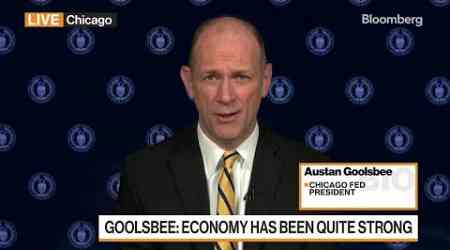

Lydia S.
Ongoing inflation and rising rates continue to wreak havoc on the market.
Now's the time to ensure you own strong stocks - and sell the stocks that are least likely to rebound.
Seeking Alpha Premium gives you exclusive access to in-depth market analysis, lightning-fast news, and a dynamic investor community.
Our stock ratings help you find the most attractive stocks to buy now and hold long term. Backed by our powerful Quant system, our ‘Strong Buy’ stock picks are beating the market by more than 4-to-1.
Get 50% off Premium
What it means: The latest announcement will bring the total to 165M barrels out of the 180M barrels that Biden authorized in March to "help address the significant market supply disruption and lower energy costs for American families." Volumes in the Strategic Petroleum Reserve have subsequently dropped to just 434M barrels, marking their lowest level since 1984. At the start of the year, the SPR contained 593M barrels, and it reached its highest point in 2010, when emergency stocks reached 727M barrels.
"I think the market should be freaking out" about the end of SPR draws, said Phil Flynn, energy market analyst at the PRICE Futures Group. "I think when the releases end, it's going to have the impact of losing a major producer - it will really tighten supplies." He even believes it could add another $5 to $10 premium to WTI oil prices.
Some history: Washington has released oil from the SPR roughly two dozen times, but most of them have been on a small scale (around 1M barrels) and in the wake of local disasters or emergencies. Over the past year, however, the Biden administration has coordinated two big releases of 30M and 50M barrels, while the latest 180M was a third. Prior to these, a big drawdown from the SPR was a rare event, only coming after supply disruptions during the Libyan civil war in 2011 and Hurricane Katrina in 2005. (184 comments)
Transcript highlights: "We have got to get inflation behind us. I wish there were a painless way to do that. There isn't," Fed Chair Jerome Powell declared. "Reducing inflation is likely to require a sustained period of below-trend growth and there will very likely be some softening of labor market conditions. Restoring price stability is essential to set the stage for achieving maximum employment and stable prices over the longer run. We will keep at it until we're confident the job is done."
While a small relief rally took place after the Fed hiked rates by a whopping 75 basis points - instead of a colossal full percentage point - the sentiment did not last. The major stock averages closed the session down 1.7%, as the 10-year Treasury yield spiked 7 bps to 3.64% and the rate on the shorter-dated 2-year popped 15 bps to 4.11%. Things continued to be volatile the rest of the week, as investors fret over the state of the economy, with the Fed willing to tolerate a painful recession as a key trade-off to keep a lid on inflation.
Case in point: "The deceleration in housing prices that we're seeing should help bring sort of prices more closely in line with rents and other housing market fundamentals. And, you know, that's a good thing," Powell continued. "For the longer term, what we need is supply and demand to get better aligned, so that housing prices go up at a reasonable level, at a reasonable pace, and that people can afford houses again. And I think we - so we probably in the housing market have to go through a correction to get back to that place." (92 comments)
In first place: Cheerios-maker General Mills (GIS) drove the momentum, finishing the session up 5.7% after a strong beat-and-raise earnings report. Sales rose 4% to $4.72B, in line with Wall Street estimates, helped by lower than expected volume elasticities, strength with the North American retail business, and higher prices, which added 15 percentage points to the top line. Adjusted earnings also came in at $1.11 per share, beating consensus expectations by $0.11.
"Significant inflation and reduced consumer spending power has led to an increase in at-home eating and other value-seeking behaviors," noted CEO Jeff Harmening. "We continue to deliver strong performance in a highly volatile operating environment."
Guidance for FY2023: Organic net sales are expected to increase 6%-7%, compared to a previous estimate of 4%-5%, while EPS is forecast to grow +2% to +5% vs. a prior expectation for 0% to +3%. General Mills also sees costs rising as much as 15% due to increases for raw materials, labor, freight and fuel. Food prices in the U.S. climbed 13.5% Y/Y in August, according to the Labor Department, marking the fastest pace since March 1979. (4 comments)
What's happening? Ultra-dovish policies in Japan are keeping the yen under pressure, leading to a strong wave of constant dollar buying in the forex markets. The yen (along with the euro) are by far the most traded currencies against the dollar, so when both are weak, it makes it harder for anything else to rival the greenback. The Bank of Japan also wants to ride out recent price pressures by sticking to its yield curve control policies, hoping that the current levels of inflation aren't sustainable due to hiccups in the post-COVID recovery.
"I believe we won't be introducing a rate hike anytime soon," Bank of Japan Governor Haruhiko Kuroda told a news conference. "We have decided to continue the monetary easing after thoroughly discussing what the most effective monetary policy is by analyzing the Japanese economy, price trends and future development in depth."
Outlook: Japan is growing increasingly isolated on the global monetary policy stage, with most major economies pulling their short-term rates out of negative territory. The Swiss National Bank even raised its policy rate by 75 basis points on Thursday, ending years of minus rates that hoped to keep an appreciation of the franc in check. (4 comments)
Snapshot: There are many measures being pitched in the latest EU sanctions package, but it could be hard to find a consensus among all 27 members of the bloc. The penalties include removing more Russian banks from the SWIFT international payment system, as well as targeting Russia's tech, cybersecurity and software industries. Other ideas on the table could center around banning luxury goods and diamond imports, but perhaps the most hard-hitting and controversial sanction would be to impose a price cap on Russian oil.
Details are still being discussed, but the plan aims to cap prices at a level close to the cost of Russian production to dent Kremlin finances. To accomplish this, Europe would restrict the availability of transport and insurance services to shippers that agree to observe the price ceiling (~95% of the world's oil tanker fleet is covered by the International Group of P&I Clubs in London and companies based in continental Europe). Another proposal is to limit the usage of U.S. financial services that could benefit from the scheme, but many are skeptical about its effectiveness, with some big Russian buyers like China already paying in yuan and rubles.
Tensions: While hawkish countries like Poland and the Baltic states are demanding the new measures, others feel that it could be tough to get anything more than a limited set of penalties. The last attempt to pass a big sanctions package in June led to infighting in the bloc, as countries led by Hungary refused to sign up to a Russian crude embargo until they were granted an exception for pipeline oil. Things may not be better this time around, as EU legislators just voted to declare that Budapest was no longer a "full democracy," though some say the latest package could get over the line, as it would have much less of an impact on the Hungarian economy than the crude embargo. (13 comments)
Dow -4.% to 29,590. S&P 500 -4.7% to 3,693. Nasdaq -5.1% to 10,868. Russell 2000 -6.6% to 1,676. CBOE Volatility Index +13.8% to 29.92.
S&P 500 Sectors
Consumer Staples -0.4%. Utilities -1.9%. Financials -4.1%. Telecom -3.4%. Healthcare -2.9%. Industrials -2.7%. Information Technology -2.3%. Materials -3.7%. Energy -2.4%. Consumer Discretionary -4.8%.
World Indices
London -3.% to 7,019. France -4.8% to 5,783. Germany -3.6% to 12,284. Japan -1.5% to 27,154. China -1.2% to 3,088. Hong Kong -4.4% to 17,933. India -1.3% to 58,099.
Commodities and Bonds
Crude Oil WTI -6.7% to $79.43/bbl. Gold -1.9% to $1,651.7/oz. Natural Gas -11.9% to 6.841. Ten-Year Bond Yield -0.2 bps to 3.687.
Forex and Cryptos
EUR/USD -3.25%. USD/JPY +0.3%. GBP/USD -4.85%. Bitcoin -5.%. Litecoin -5.1%. Ethereum -9.8%. XRP +34.3%.
Top S&P 500 Gainers
General Mills (GIS) +5%. Kellogg (K) +3%. Allegion (ALLE) +3%. Hormel Foods (HRL) +2%. Campbell Soup (CPB) +2%.
Top S&P 500 Losers
Caesars Entertainment (CZR) -22%. APA (APA) -19%. Carnival Corporation & plc (CCL) -17%. SolarEdge Technologies (SEDG) -17%. Marathon Oil (MRO) -16%.
Best last minute News headlines from Your Country and inborn language
Yachts News | Discover the Exclusive World of Yachts
Yachts Listings for Sale and Charter
immediate for delivery New Exclusive Hyper, Mega, Classic and Super sports Cars
Crypto Coins for FREE when use this link































